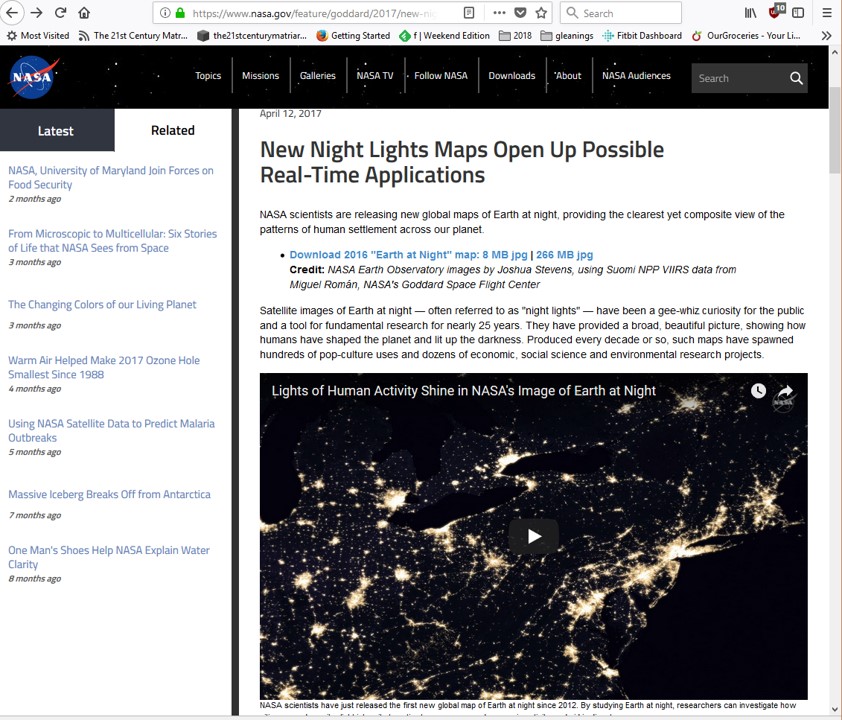Gleanings of the Week Ending January 18, 2020
/The items below were ‘the cream’ of the articles and websites I found this past week. Click on the light green text to look at the article.
Earth at Night – This is an eBook from NASA that was last updated in December 2019….lots of pictures of the earth at night, analysis, and the technology behind the images.
Genomes Sequenced for Every US and Canada Butterfly | The Scientist Magazine® - Work by an evolutionary biologist at University of Texas Southwestern Medical Center. 845 butterfly species were studied.
Adding copper strengthens 3D-printed titanium -- ScienceDaily – Current titanium alloys used in 3D printing were prone to cracking and distortion. The copper alloy seems to overcome that problem.
When the best way to take notes is by hand - BBC Future – I like to take notes by hand….it always seemed easier to me than using a laptop (although I tried using a laptop to take notes in meetings during my career). Now it seems that it is better for internalizing concepts too. No need for me to try to change to anything else!
Blue Whales’ Hearts Can Beat Exceptionally Slowly | The Scientist Magazine® - As low as 2 times per minute! The high was 37 beats per minute.
Image of the Day: Ochre Paint | The Scientist Magazine® - Evidently ancient people heated aquatic bacteria mats growing in iron rich water to make a bright red paint which was used for rock art. The paint contains microfossils of the bacteria (Leptothrix ochracea). The red color is highly thermo-stable…something that has applicability to manufacturing.
Crows could be the smartest animal other than primates - BBC Future – Clever crows. Not so long ago we thought humans were the only ones to make and use tools.
Incredible Winners of the 2019 EPSON International PANO Awards – Panoramic photographs…a little eye candy for the week.
Trashed farmland could be a conservation treasure -- ScienceDaily – Interesting idea…but how much land is in this category and what happens to the people that are still trying to eke out an existence on that land.
Future For Silversword Plants At Halaeakalā National Park Dark – Rare plants…have not recovered as well as the Nene (Hawaiian goose) – for several reasons. Plants around the world are having to adjust to changing climate and some will not be able to change fast enough to continue to exist in the same places…some may become extinct. I hope the Silversword survives.





















